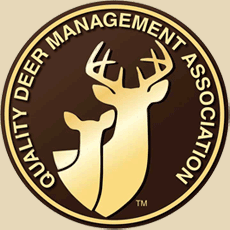Walter Stroman, of the U.S. First-Class Rifle Team and Sergeant First Class Kyle Ward, of the U.S. Army Marksmanship Unit have some pointers on improving your shot out in the field. Shooting skills are very important for hunters and it’s definitely worth the effort to take the time to get your skills up to par for hunting season.
For starters, you need a high-quality scope. Your scope should probably cost at least as much as your rifle. Quality scopes will help tremendously in low-light situations, as well as have precise windage and elevation adjustments. The better scopes today yield 95% light transmission to the shooter’s eye, or better. It is equally important to buy high-quality rings and mounts and to have your scope mounted by someone you trust.
Before you go out on your first hunt, there are several things you should do. First, be sure there are no loose screws on your rifle. The screws that secure your rifle to the stock are very important for accuracy and need to be tightened properly. Second, clean your rifle barrel. You’ll know a good cleaning is in order if you see a lot of copper in the muzzle of the rifle. Powder residue and copper fouling accumulated in the barrel decrease accuracy. Most cleaning solvents produce a bright blue color on cleaning patches when there is copper residue present. Sometimes a good barrel conditioning paste is your best bet for cleaning a heavily-fouled barrel. Third, season your barrel. Whenever you break in a new barrel, you should clean it after every round for the first 10 rounds and every 5 rounds thereafter. A good conditioning paste will provide a mirror-like shine in your bore and aid in the removal of any small burrs in the rifling during the seasoning process. Accuracy is dramatically reduced when a barrel fouls out. Keep it clean. Use inexpensive ammo at the range to condition in your barrel. Check the trigger pull (with no ammo in the chamber) using a digital gauge. A crisp, consistent trigger is the goal. Once you’re on paper and grouping well with target ammo, it’s time to sight in for the hunting load you choose. Finally, zero your rifle for 200 yards. With a 200-yard zero, you can place the crosshairs on a deer’s vitals and make a shot from close up or up to 250 yards without adjusting your aim. Zero your rifle when temperatures are close to what they will be during hunting season. Humidity, barometric pressure and altitude affect bullet impact.
Once you have your scope and rifle and accessories set and ready, it’s important to continually work on your shooting skills. Practice shooting year-round instead of waiting until hunting season. Make shooting practice fun by shooting at jugs of water, balloons or clay pigeons. Practice standing shots, sitting shots, or any other position you might be in when you’re actually out there hunting. Finally, make sure you understand deer anatomy and where you need to place your shot. A good double-lung punch will put down deer in 200 yards or less. A well-placed high shoulder hit will drop them in their tracks.
Additional Resources:




